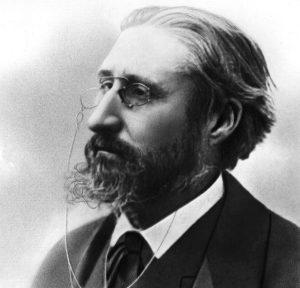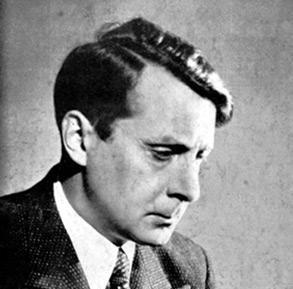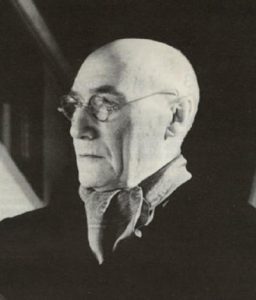A whole life devoted to converting people by painting
Samuel Bastide was born in 1879, in Saint-Jean-du-Gard. In spite of his good school results, he left school at the age of 11 and began learning copper etching techniques ; somewhat later he opened a photo-enlargement studio, and began theological studies in Geneva but did not complete them.
At 18 he signed up with the Croix Bleue (an association struggling against alcoholism) and was to work all his life for this humanitarian cause. It was for the Croix Bleue that in 1908 he organized his first lantern slide show of La chèvre de Monsieur Seguin by Alphonse Daudet. During the First World War he was responsible for a soldiers’ club and greatly increased the number of his slide shows.
After the war he ran civilian hostels and then became an itinerant speaker for the Central Evangelical Society. He organized a slide show lending service for churches that wished to use them.
In 1938 he began working for the Ligue Nationale antialcoolique ;he improved his methods of editing slide shows for new audiences : schools, teachers’ training colleges, and army barracks.
Back in Saint-Jean-du-Gard he visited parishes and schools with his projections until the age of 77.
He died in Lausanne in 1962.
He leaves an original series of several thousand painted glass plates that can be projected on a screen.
Bastide’s meticulous drawings are very detailed ; he printed a reduced photo of each drawing on a glass plate measuring 8×8 cm, then hand-painted it and projected it by means of a folding, portable lantern of his own invention, with a double focus .
In this way, he created over 2500 slides making up 35 montages separated into four different categories : the short series, generally profane (fables, tales by Daudet) which he would project either as the first part of a show, or to non-religious audiences. The longer montages, lasting about an hour, were divided in three themes : educational series (against alcoholism), biblical series (mostly illustrations of the New Testament), and thirdly the bulk of his work : a series on the history of Protestantism. In his historical montages he highlights heroic men and women ; he singles out the constancy of their faith and the way they resisted to persecutions aimed at breaking down their integrity.
His work constitutes a unique memorial of the history of Protestantism. It can be viewed, together with all his apparatus and personal mementoes, at the Musée des Vallées Cévenoles.






